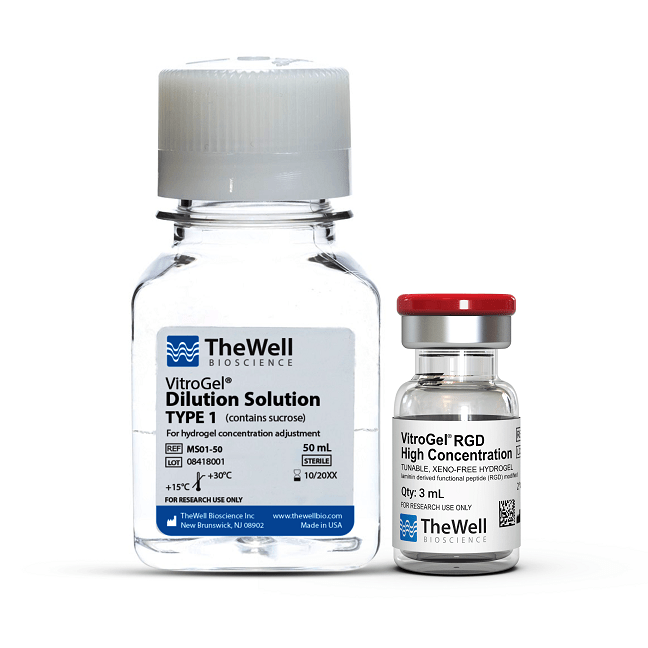Research Highlights
An Artificial Womb for the Womb

Institutions:
Shengjing Hospital of China Medical University & University of British Columbia
Team:
Zhao, X., Zhang, S., Gao, S., Chang, H.-M., Leung, P.C.K., and Tan, J.
Disease Model:
Ovarian Cancer
Hydrogel:
VitroGel® RGD
Three-dimensional cell culture in a hydrogel that was augmented with laminin peptides supports follicle tissue maintenance and hormonal function ex vivo.
The human ovary contains an aggregate of cells known as the follicle, that secretes hormones that regulate the production, development, and maturation of oocytes and the overall menstrual cycle. A more complete understanding of how follicular cells, including the granulosa cells (GCs), coordinate their functions and interact with the surrounding extracellular matrix (ECM) can help us protect the follicle during treatments for ovarian cancer. With enough appreciation of how all of these components work together may permit the removal and subsequent re-transplantation of the follicle following radiation or chemotherapy, thereby preserving reproductive potential.
In this paper, an international Chinese & Canadian team of bioengineers sought to emulate the ECM in order to provide an ex vivo environment in which the follicle could be supported and investigated. They explored the effect of a simulated ECM, containing a suite of specific additive proteins, particularly laminin, on human GCs and overall follicular function. They compared the environments provided by 2D and 3D cell cultures. Using TheWell Bioscience’s VitroGel ® 3D medium for their cell culture, they found that growth and viability of follicle cells was greatly enhanced compared to traditional two-dimensional cell culture conditions.
Next the authors tested the effects of stimulatory peptides on human GCs in the 3D cell culture scenario. To do this, they used VitroGel RGD, which is a hydrogel modified by the arginine-glycine-aspartate (RGD) tripeptide and compared that to 3D cell culture conditions that were augmented with laminin-mimic peptides, such as (with or without) the pentapeptides IKVAV and YIGSR. It should be noted that RGD is an integrin-binding peptide, such that in a complex biological-like milieu, it can activate signaling pathways and subsequently affect cell proliferation, differentiation, or migration. Three dimensional cultures of follicles were maintained at 37 °C for 12 days at pH 7 and 5% CO2 and then assayed for viability, cell cycle characteristics, senescence, mitochondrial function, and RT-PCR/Western blotting for gene expression levels.
The tests that the investigators ran on the 3D cultures modified with any or all of these peptides confirmed that this environment supported cell growth and follicular function, suppressed cell death tendencies (such as apoptosis), and prevented the accumulation of reactive oxygen species. Moreover, 3D cell cultures maintained the proper hormonal function of the follicle. The authors could conclude not only that simulated 3D cell cultures were indeed potent preservation environments for follicle tissue and human GCs, but that the laminin-mimic peptides played an important role in achieving this supportive milieu. These results portend very powerful clinical procedures that can prevent tissue damage during treatment for ovarian cancer and related diseases of the ovary.
Read the publication:
Related Products:


